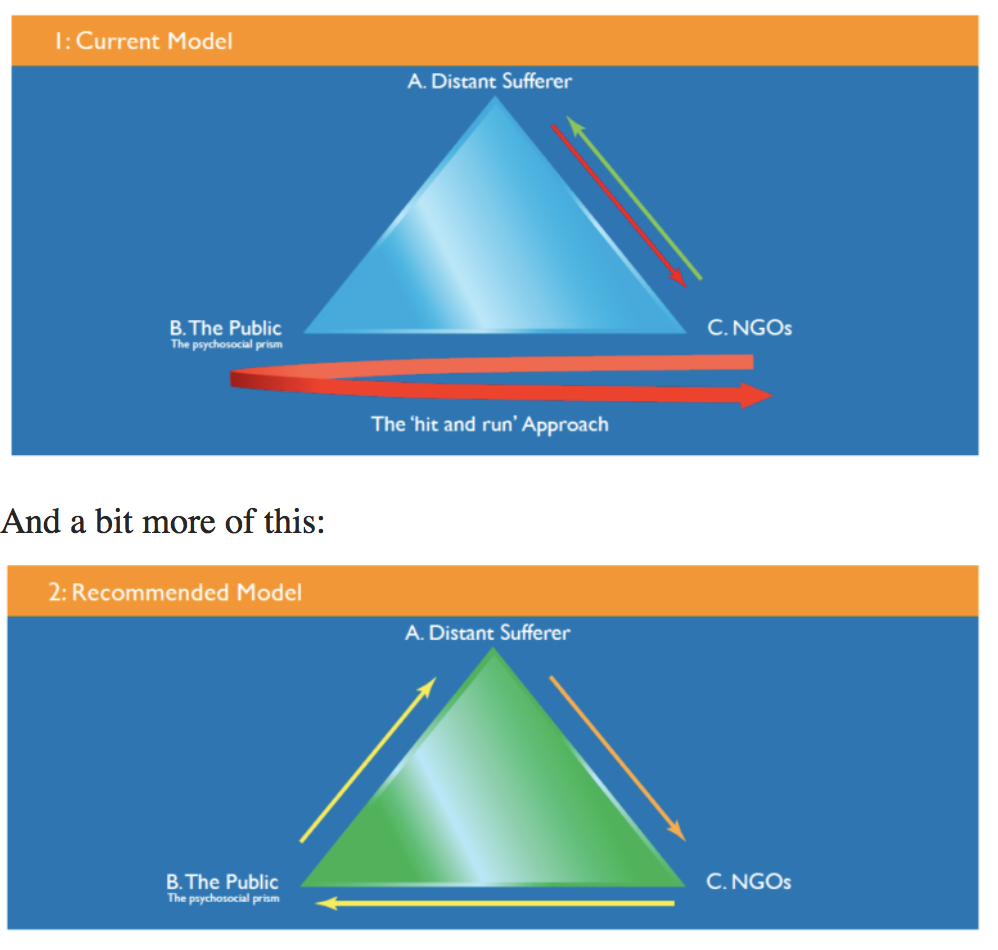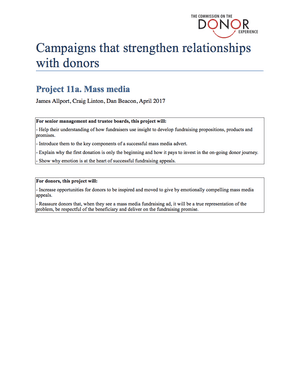CDE project 11a: putting the principles and actions into practise
- Written by
- The Commission on the Donor Experience
- Added
- April 30, 2017
Before considering the guidance on what we need to be doing to improve the experience for our donors, we should take some time to consider some of the key issues facing the sector.
Concerns with Mass Market Fundraising
A recent report (Caring in Crisis) produced by the LSE and Birkbeck held some serious warnings for the NGO sector. It builds on concerns that a “quick buck” approach is eroding the trust between donors and charities. This report shows that there is evidence of a growing disconnect between donors and charities. The report said that charities need to be less like:

The report asks charities to…
- Rethink our view of the public — from sales targets to complex and sophisticated individuals who want a conversation about the issues;
- Reduce our reliance on emergencies as the staple “hook” for new donors; and
- Rethink our role from collectors of funds and dispensers of good, to a more facilitative role.
It also raises the issue that donors need to feel more connected to the work that is being done, and the benefit to the beneficiary. In short it highlights the fact that a charity is a trusted conduit for donors to support others. So, to maintain support we need to maintain trust.
Another question is the use of imagery and messaging. The reality is people are more likely to respond to an emotional advert that focuses on need. However, if we are going to take that approach we need to be careful not to create a disconnect by either over doing the need, or breaking the trust.
Low value asks lead generation advertising – eroding donor trust?
One question that we should consider is whether a constant exposure to a £3 one-off premium SMS ask is in part adding to these problems for long term income. It also raises the question whether we are conditioning the public that £3 every now and again is all that is needed to solve some very complex problems. An individual that has just completed the decision making cycle and made a donation can then feel cheated or let down when they receive a phone call almost immediately asking for a larger regular donation. This feedback has come from both the donors and sector professionals.
As we look to improve the donors overall experience we should consider if these methods are something we should continue to use for regular giving recruitment. Long term is it turning people off who might have donated over a long period had they been asked for a regular donation in the first instance?
Lead Generation – value exchange
When this is done well it can provide a great donor experience. Friends of the Earth’s Bee Cause is a great example of this: http://sofii.org/case-study/friends-of-the-earth-the-bee-cause
However, this methodology came under scrutiny after complaints about a pedometer campaign run by Diabetes UK in 2015. This campaign invited people to send an SMS to receive a pedometer and to raise awareness of diabetes. People receiving the pedometer were then followed up with a request for a regular donation of £10 a month.
The FRSB held up the complaint against the campaign.
....[the] campaign had a clear ulterior motive to solicit contact details for a subsequent fundraising approach and was not solely designed to assist the public by raising awareness of [the issue] and offering free [item] as indicated by the campaign’s marketing materials.
https://www.civilsociety.co.uk/news/frsb-rules-that-diabetes-uk-campaign--misled-the-public-.html
The ruling has very clear implications on how consent needs to be gathered and the need to separate a value item given for free and then contacting someone to start a new donor relationship. The General Data Protection Regulation (due to be implemented in May 2018) is also going to make these campaigns more difficult to run.
With it becoming increasingly competitive and difficult to deliver new donors, we need to ensure we are recruiting the right people for the long term. Hopefully the following methodology will help you do that.



















